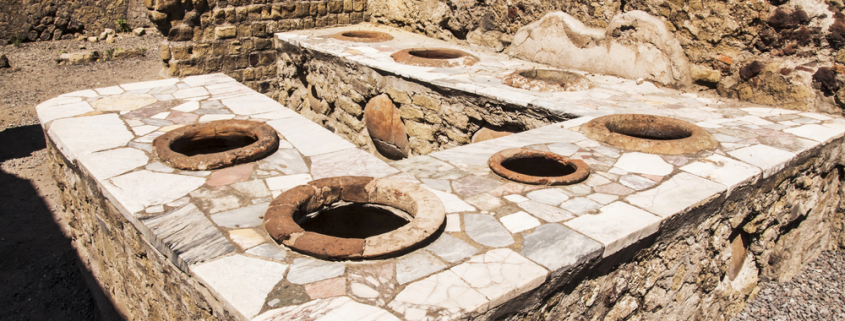Ancient Business Financing
Business Financing in the Roman Empire vs. Today: A Comparative Insight
Ancient Entrepreneurship
During a recent tour of Pompeii in Italy, the city buried by the eruption of Mt. Vesuvius in 79 AD, I was amazed at the streets full of small business shops. As I strolled by some of civilization’s first fast food restaurants (where they sold hot soup out of tureens that still exist), I thought about how those businesses ran similarly to today’s businesses. Small business owners worked and often lived in or above their shops. They traded with other entrepreneurs, borrowed money from wealthy citizens to expand their businesses, and marketed their wares in streets lined with shops or at centralized markets. But they aren’t at the heart of the stories told about history. We hear what governments did throughout history, but not often about the people who worked to grow their economies and build the foundation of our business environment today.
According to Steve Mariotti, founder of the Network for Teaching Entrepreneurship, “For the field of history, the small business person is invisible — the entrepreneur is forgotten and ignored. The psychic damage this perspective has done to our collective consciousness is significant. How do we empower our children to be entrepreneurial if they don’t learn about the importance of small business throughout history in school?”
Ancient Roman Financing
In the Roman Empire, business financing was multifaceted and innovative for its time. Key methods included:
- State Sponsorship and Publicani: The state provided funding for significant public works and services. These publicans were private entrepreneurs who undertook public contracts and collected taxes, financing these operations through investments from wealthy Romans.
- Negotiatores: Part banker and part merchant, these tradespeople lent money and charged interest. They also handled wholesale quantities that eventually moved to retailers, as described by Breminate in their article Business and Commerce in Ancient Rome.
- Banking and Loans: Roman bankers (argentarii) acted as agents in public and private auctions, provided loans and charged interest, took deposits, cashed checks (prescriptions), and exchanged currencies.
- Societates: These were temporary joint ventures similar to modern limited partnerships, where partners pooled resources for trade ventures, sharing profits and risks.
- Patronage: Wealthy individuals sponsored smaller entrepreneurs, providing capital in return for loyalty and a share of profits.
Modern Business Financing
Today, while the essence of financing remains the same—providing capital for business activities—the mechanisms have evolved significantly:
- Diverse Financial Instruments: Modern businesses have access to a broader range of financing options, including venture capital, bank and non-bank business loans, factoring, credit lines, crowdfunding, and bonds.
- Regulated Banking Systems: Unlike the relatively informal banking practices of Rome, today’s financial systems are heavily regulated to ensure stability and protect stakeholders. Regulations are set at federal, state, and sometimes city levels.
- Corporate Structures: Modern businesses often incorporate as limited liability companies or corporations, providing legal protection and enabling easier access to capital markets.
- Digital and Global Reach: Technological advancements have globalized business financing, allowing companies to secure funds from international investors via digital platforms.
Comparison and Evolution
The transition from ancient to modern financing reflects broader economic evolutions. Roman methods were foundational, setting the stage for complex financial systems that facilitate today’s global economy. The primary difference lies in the scale, sophistication, and regulation of the financial instruments available. Today’s businesses benefit from more structured financing options, greater protection under the law, and access to a global pool of capital, which contrasts with the more localized and personal nature of Roman financing.
Understanding these historical roots helps us appreciate the sophistication of ancient Roman finance and its influence on modern economic practices. The evolution from personal patronage and basic banking to complex, regulated financial systems shows continuity and innovation in business financing through the ages.
Note: The author recently visited Italy, including Rome, Venice, and Naples, as well as the historical treasures in Pompeii and Herculaneum. She was fascinated with the sophistication of the culture and how many of our practices today were built on the foundation of this powerful confluence of ancient civilizations.



Leave a Reply
Want to join the discussion?Feel free to contribute!